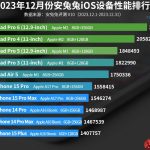Tech giants Apple and Qualcomm are spearheading a groundbreaking initiative to usher in a new era of performance. Collaborating with Taiwan Semiconductor Manufacturing Company (TSMC), the companies are vigorously advancing their efforts towards the development and integration of the cutting-edge 2nm semiconductor process. This strategic move aims to position Apple as the pioneer in utilizing the 2nm architecture, a bold step that promises to redefine the standards of mobile chip technology.
Apple and TSMC: A Symbiotic Technological Pursuit
Apple and TSMC have entered strategic discussions. Therefore, they set the stage for a technological symbiosis. Apple is actively engaging in harnessing TSMC’s 2nm node, as evidenced by examining TSMC’s slides. This signifies the commencement of designing chips that leverage cutting-edge technology. Moreover, this partnership could reshape the mobile chip market. On the other hand, it underscores Apple’s commitment to innovation and staying ahead.
The Impending iPhone Revolution
Projections suggest the iPhone series might benefit from 2nm chips by 2025. The release could coincide with the iPhone 17 family debut. TSMC’s 3nm and 5nm processes showcased significant gains in Apple A-series chip performance and efficiency. The upcoming 2nm technology is set to elevate these capabilities further. However, challenges may arise in implementing this cutting-edge technology seamlessly. Regardless, the potential for enhanced performance and efficiency remains a promising prospect for Apple enthusiasts.
TSMC’s Pioneering Journey into 2nm Territory
TSMC initiated the development of the 2nm process in 2019 and is planning to commence mass production in the latter half of 2025. The significance of the 2nm process lies in reducing transistor sizes, enabling a higher component density on a chip. This breakthrough promises more robust features and an extended battery life for devices.
Meeting Future Technological Milestones
The collaboration extends beyond Apple, as Qualcomm has also been in talks with TSMC, seeking insights into the 2nm process. Qualcomm is particularly keen on expanding the Snapdragon XR2 series, which powers XR devices, and incorporating the 2nm process into the Snapdragon 8 Gen 5, demonstrating a shared vision for the future of mobile technology.
Beyond 2nm: A Glimpse into TSMC’s Future Endeavors
The partnership’s horizon may extend beyond the 2nm realm. Reports suggest that TSMC has embarked on research and development for an even smaller 1.4nm architecture, with activities projected to continue until 2027. This marks a potential avenue for further collaboration, and Apple could again be at the forefront of adopting this groundbreaking technology.
A Technological Odyssey Unfolding
Apple and Qualcomm deepen ties with TSMC. This boosts semiconductor processes, focusing on technological excellence. In the pursuit of 2nm territory, commitment to innovation becomes evident. Unprecedented performance and future mobile possibilities await consumers. On the horizon are 2nm chips, setting the stage for a paradigm shift in mobile devices. However, this transformation brings challenges, pushing boundaries and demanding adaptability in the industry. Despite this, the landscape of mobile technology promises exciting advancements and cutting-edge developments. In addition to this, the engagement signifies a collective journey toward shaping the future of consumer electronics.











